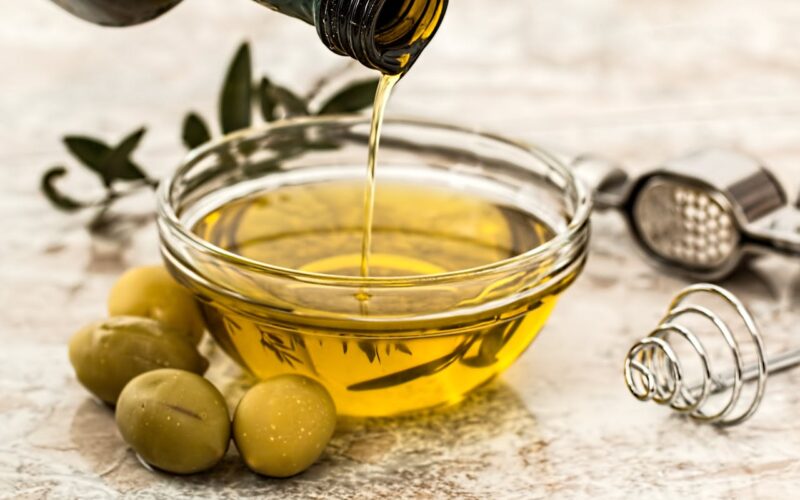
Ubiquitous with Italian cooking, olive oil is closely tied with our heritage culinary techniques. From helpful storage tips, to what varieties we prefer for different techniques, read on to learn more about olive oil from the Sprezzatura team!
Olive Oil vs. Extra Virgin Olive Oil
If you have analysis paralysis at the olive oil section of the grocery store, you’re not alone. Extra virgin olive oil, virgin olive oil, pure olive oil, and light olive oil are all options on the shelves. Here are a few attributes of each variety:
- Extra Virgin Olive Oil: This oil is produced through crushing olives without heat or chemicals, leaving a rich taste from less processing
- Virgin Olive Oil: Similar to the extra virgin variety, this type is slightly lower quality with a higher acidity of 1.5%
- Pure Olive Oil: Also labeled simply as “Olive Oil” this kind is lighter tasting and made typically with a blend of virgin and refined olive oils
- Light Olive Oil: This oil blend is light in flavor, has a higher smoking point, and is made from a blend of virgin and refined oils
Tips for Sourcing Quality Olive Oil
You might be tempted to only buy olive oil straight from Italy, but plenty of mediterranean countries and even America’s west coast produce equally high quality oils. A lot of label terms, such as “first cold press” or “packed in [country]” and “Made in Italy” are actually marketing ploys that don’t require regulations. Pay attention to the following labels:
- Filtered: Most olive oils sold in America are filtered to remove sediment, but some people swear by the unadulterated taste of unfiltered oil
- Olio Nuovo or Olio Novello: Italian for “new oil” this is freshly pressed from green olives in the start of the harvest season, it typically has a bolder flavor
- Award Labels: This can be tricky, but see what year the award was given, if it’s from the same packing year as your oil, great. If it’s older, then this current olive oil may be very different from the award winning variety from a previous season.
The most important thing is finding an olive oil that you enjoy regularly using in your kitchen. If you’re looking to buy the best quality olive oil available, check out the official guide from the New York International Olive Oil Competition (NYIOOC). It’s the world’s largest olive oil competition and features winners ranging from Tunisia to Australia.
How to Store Olive Oil
Olive oil is a shelf stable ingredient, but there are a few ways to make sure it stays tasting fresh. Avoid storing it near any heat sources, such as an oven or stovetop. Move olive oil away from direct sunlight and always make sure the cap is securely on to avoid oxygen exposure. Lastly, olive oil is best within two years of bottling, so keep an eye on the packaging date and use accordingly for finest flavor.
Our Favorite Ways to Use Olive Oil
Olive oil is a staple in Sprezzatura’s kitchen, but what type we use depends on what we’re making. For blending into salad dressings, pouring over focaccia dough, or marinating mushrooms, we prefer extra virgin olive oil for its pronounced flavor and color. For dishes with a higher heat point, we reach for light, blended oil containing olive oils and other oils when caramelizing onions, roasting chickens, or baking cakes.
Want to learn more about olive oil? Grab tickets to Sprezzatura’s class: Olive Oil Tasting: Explore Regions and Makers. Use all your senses to enjoy tastings of a variety of olive oils from different regions and types of presses. This class is paired with a delicious light dinner.

